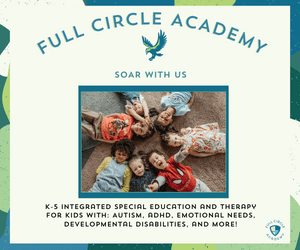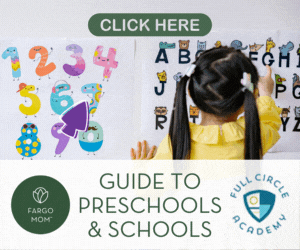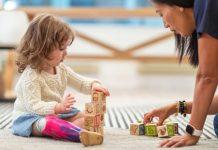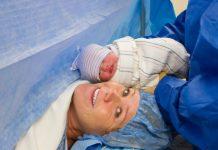February is Congenital Heart Disease Awareness Month.
I was one of those babies. Thankfully, I was able to get the necessary medical interventions.
My Experience
In 1989, one morning only a few days after I was born, my mother noticed I was choking on my bottles and struggling to breathe comfortably. Her maternal instinct told her that something wasn’t right, and she rushed me to the local hospital.
A few hours later I was diagnosed with congestive heart failure. And the prognosis was poor.
So poor in fact, that the doctors did not know if I would survive the drive from St. Cloud, MN to the Minneapolis Children’s Hospital for further evaluation. The staff decided to load me up in my car seat with enough oxygen to keep me stable and hope for the best.
My parents drove frantically and met with a team of experts that evening at the hospital. I was baptized (with the thought that I might not survive the procedure) and sent to surgery. My family hoped that doctors might be able to fix my undiagnosed heart defects, but with lack of technology and poor survival rates, it was not a sure thing.
A miracle occurred and I survived surgery. I was diagnosed with a coarctation of the aorta (a narrowing of the aorta) and a ventricular septal defect (a hole in my heart).
The surgery repaired the hole, but there was little they could do to fix my aortic defect at the time.
Fast-forward to six months later, I was a healthy, growing baby who had a second surgery to remove the hole closure band. From then on I was monitored annually for any changes.

Living with Heart Problems
Throughout my childhood and adolescence my heart remained stable. But now as a mature mother I am facing valves that are tired and worn out due to deformities — a condition called aortic stenosis. And I might need replacements in the future.
I also continue to monitor my unrepaired aorta. It affects my blood supply which has made long distance running and swimming painful.
All things considered, I have lived a completely normal and healthy life. Unfortunately this isn’t always the case for survivors as we mature into older adults.
However, clinics (like Sanford locally) have recognized this phenomenon and have a cardiologist dedicated to patients who are like me — babies born with defects who are now adults.
Signs of Congenital Heart Defects (CHD)
It’s important to educate parents on this rare but very serious disease, and help others recognize potential signs and symptoms.
According to Mended Hearts, here are some common signs that your baby may need immediate medical attention:
- Rapid breathing
- Cyanosis (bluish coloring of the tongue, lips, skin and/or fingernail beds)
- Fatigue (note that most babies sleep a lot, but more than “normal” fatigue or tiredness may indicate a heart defect or other medical issue)
- Poor feeding
- Poor weight gain
Prevention/Hospital Screenings for CHD
Many hospitals (including local providers like Sanford, Essentia, and home birth midwives) utilize a pulse oximetry test as part of a standard newborn screening. This detects potentially low oxygen levels in the blood that can be a sign of CHD.
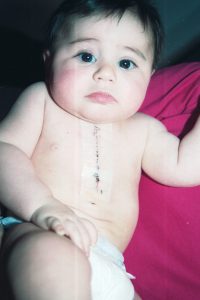
Besides the newborn exam and monitoring, parents should attend regular visits with their providers to assess any further concerns or signs of changes.
While having a congenital heart defect has been part of my life, it has not defined me. It hasn’t defined my success, my abilities, or who I am as a person.
I feel lucky to be able to thrive due to the lifesaving surgeries. And I want to do my part to spread awareness and education on this vital topic.





